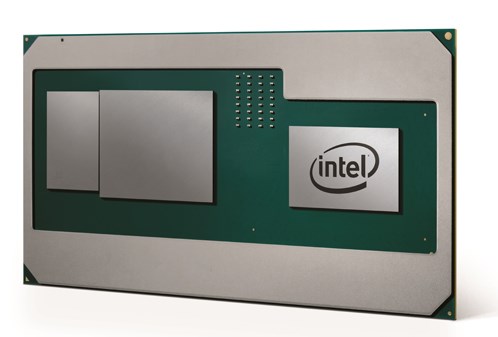
Rumors about this deal have been circulating around the web for quite some time now. As expected, Intel didn't license graphics technology from AMD but is simply placing an AMD GPU on the same module as an Intel Core H-series CPU. It will be interesting to see how this stacks up versus the Ryzen Mobile APUs from AMD, details are scarce but it looks like Intel has a very exciting product here. There are no details about which architecture is used here, but Vega is the most likely option.
Intel says the first laptops with this chip are expected in Q1 2018.

“Our collaboration with Intel expands the installed base for AMD Radeon GPUs and brings to market a differentiated solution for high-performance graphics,” said Scott Herkelman, vice president and general manager, AMD Radeon Technologies Group. “Together we are offering gamers and content creators the opportunity to have a thinner-and-lighter PC capable of delivering discrete performance-tier graphics experiences in AAA games and content creation applications. This new semi-custom GPU puts the performance and capabilities of Radeon graphics into the hands of an expanded set of enthusiasts who want the best visual experience possible.”
At the heart of this new design is EMIB, a small intelligent bridge that allows heterogeneous silicon to quickly pass information in extremely close proximity. EMIB eliminates height impact as well as manufacturing and design complexities, enabling faster, more powerful and more efficient products in smaller sizes. This is the first consumer product that takes advantage of EMIB.
Similarly, the power sharing framework is a new connection tailor-made by Intel among the processor, discrete graphics chip and dedicated graphics memory. We’ve added unique software drivers and interfaces to this semi-custom discrete GPU that coordinate information among all three elements of the platform. Not only does it help manage temperature, power delivery and performance state in real time, it also enables system designers to adjust the ratio of power sharing between the processor and graphics based on workloads and usages, like performance gaming. Balancing power between our high-performing processor and the graphics subsystem is critical to achieve great performance across both processors as systems get thinner.
Additionally, this solution is the first mobile PC to use HBM2, which consumes much less power and takes up less space compared to traditional discrete graphics-based designs using dedicated graphics memory, like GDDR5 memory.